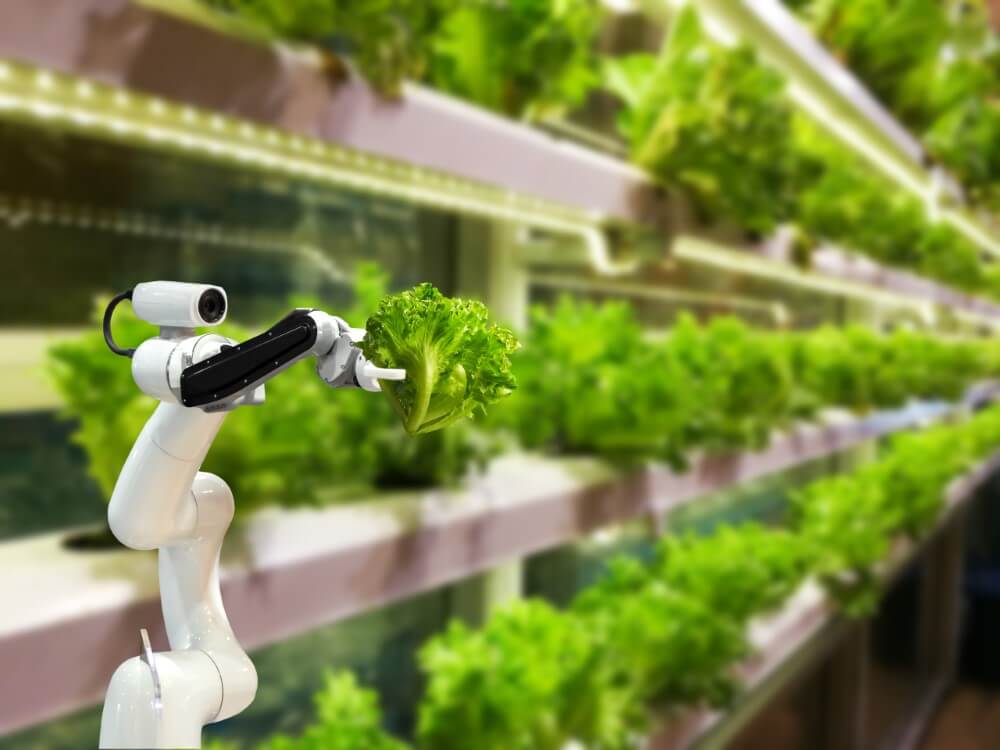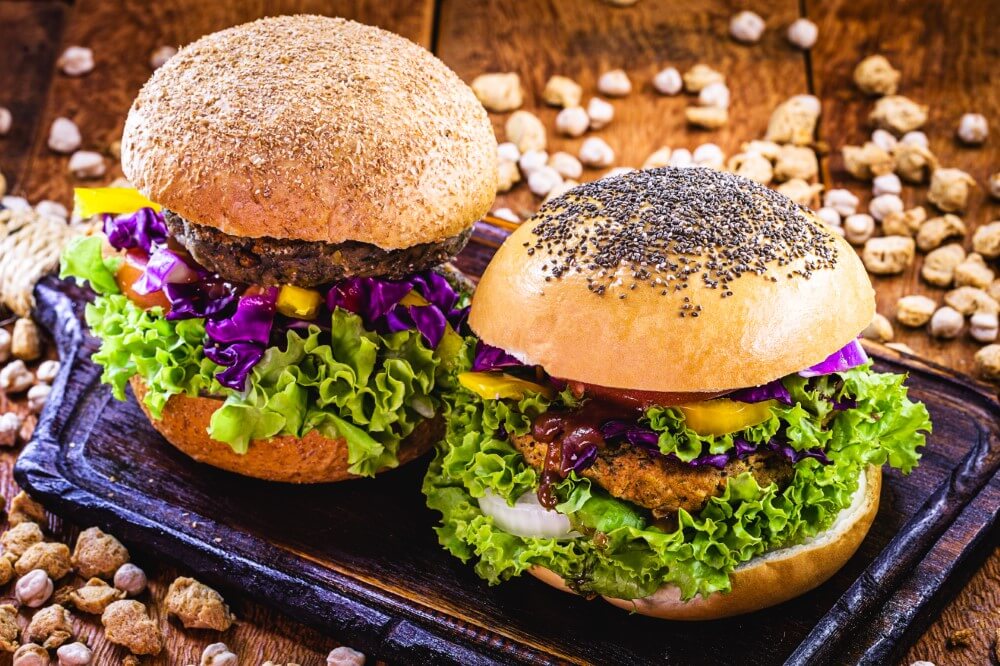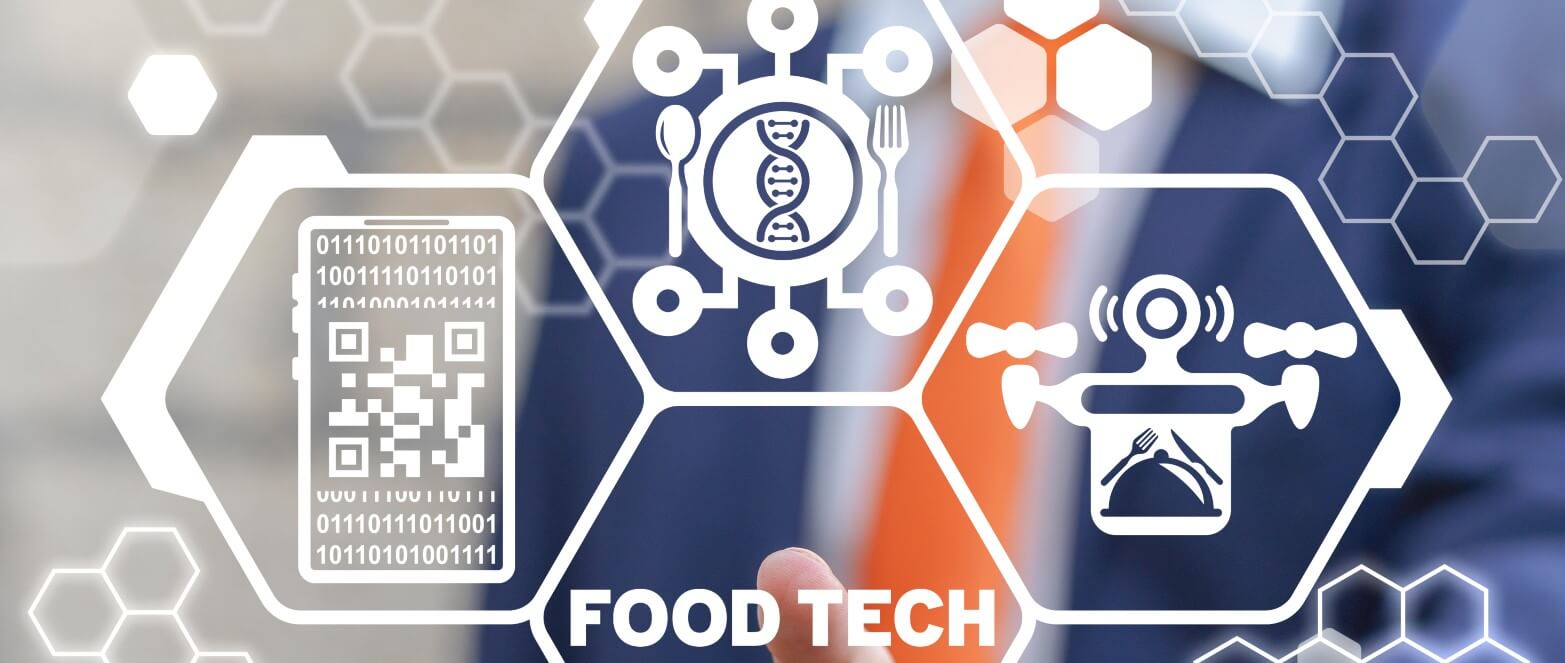Food technologists ensure the quality of food as it travels from farm to fork, applying food science to the selection, preservation, processing, packaging, distribution, and use of foods. Our world is facing unprecedented challenges to its sustainability and has forced Food Tech and AgTech innovators to create new pathways to harness today’s powerful technology to improve the world’s food supply sustainably.
Turning to science, agriculture, nutrition, AI, and engineering for solutions, they soon found themselves at the forefront of the Next Frontier: not the Wild West, not Outer Space—but the Kitchen Table.
The Role of Food Tech in Enhancing Food Security
A healthy, readily available supply of food is not guaranteed across the globe. Millions live with hunger or fear of hunger every day. The prolonged malnutrition that results from a lack of food security slows physical growth and cognitive development while increasing the risk for illness—even death.
Food technology may not be able to resolve the economic strife that prevents individuals from obtaining adequate amounts of food. However, Food Tech innovations and investments to get food from farm to fork can help to extend the shelf life of fresh items, provide a more sustainable food supply, and improve food safety overall.
Following are some of the innovative Food Tech Solutions that are shaping the future of the world’s food supply chain.
Artificial Intelligence and the Food Supply Chain
Artificial Intelligence, data management, and machine learning are great allies in making the food supply chain more sustainable. One of the biggest challenges of today is getting food from the farm to the table. Food technologists are using artificial intelligence (AI) to “teach” computers how to evaluate large data sets to monitor crop conditions, quality control, and labeling accuracy, while optimizing the use of space for shipping and storage, predicting product recalls and assessing various suppliers.

Engineering for Waste Reduction
Mother Nature created the perfect food preservation device: the peel. Peels contain cutin—a waxy layer of fatty acids surrounding produce that keeps moisture in and keeps air out. To prolong produce freshness, materials scientists took a hint from Mother Nature and created an amphiphilic compound (a compound with both hydrophilic [water-loving] and lipophilic [oil-loving] characteristics) to use as an extra “peel” for fruits and vegetables to seal in moisture and keep oxygen out.
The peel-created from existing peels, as well as seeds and pulp-is tasteless and odorless and doubles the normal produce freshness time. Careful handling and optimal refrigeration-which prevent bruising and hinder oxidation and bacterial growth-will enable this innovative food technology to extend produce freshness even further.
Computer Computations for Personalized Nutrition
Personalized nutrition is achieved by synthesizing data from scientific reports, menus, and nutrient tables and matching them with data points for the patient’s health and eating habits, which can be obtained from a wearable device, health app, or input by the patient. AI can then “teach” computers to create individualized nutrition profiles and personalized dietary recommendations, complete with meal plans and recipes.
Personalized nutrition tactics can target specific clinical conditions. For patients with diabetes mellitus, for example, data can be synced with the patient’s glucose-monitoring device and an insulin pump to customize patient care.
Food Alternatives: Meet the Meats
Consumers are seeking more sustainable protein alternatives without sacrificing quality, taste, or experience. The future of Food Tech innovation and investment will continue to improve the quality and the culinary experience of the food we eat sustainably.

You may be interested in:
Shaping Food Trends of 2024 – Sustainability, Diversity and Wellness
Alternative proteins: Satisfying the demand, sustainably
Plant based solutions for protein demand
Food Tech and Plant-Based Protein Development
Plant-based meats. Protein-packed plants are used as meat substitutes around the world. Tofu (soybean curd; China), tempeh (fermented soybeans; Indonesia), and seitan (wheat gluten; South Asia) have been seasoned like meat and used as the protein anchor of the meal for centuries.
Today, Food Tech’s plant-based protein development has led to the use of black beans and chickpeas to make veggie burgers. Some plant-based burgers come close to imitating the flavor of beef by adding heme (the protein in blood that carries oxygen), albeit by using hemoglobin from legumes– derived from genetically modified yeast—rather than its natural source (myoglobin from muscle).
Cultivated meats. Cultivated meat is produced by isolating muscle-specific stem cells from animals and putting them through a multistep process:
- Growing them in the presence of a plant-derived growth serum for 10 days
- Moving this mixture to a “small” (50-L) bioreactor for another 10 days
- Transferring it to a larger (12,500-L) bioreactor to facilitate tissue growth before harvesting the cells several times then placing them in smaller perfusion reactors, where they will mature and differentiate into muscle tissue.
The result is a piece of meat with the texture and flavor of real meat.
Technology on the Horizon
Robotics in the food industry. Robots have been used for simple food packaging and processing tasks for years. Now they can also carry out quality control tasks and evaluate the quality of foods. Parallel robots, which move along a tool carrier and require no floor space, are rapidly replacing serial robots—articulated structures that move from place to place—and reduce the space required for robotic activity.
The use of autonomous vehicles and farming equipment to perform daily tasks such as fertilizing, planting seeds, watering, picking, and others is a reality today. Autonomous vehicles and farming equipment are set to play a significant role in sustainable agriculture and have already hit the fields in many parts of the globe.
3D food printing. The 3D food printing process, first tested in 2007, consists of scanning a food product, splitting the object into thin layers, and fusing the layers to create a solid product. Two printing methods are available: controlled deposition, in which low-viscosity materials are extruded through inkjet-type print heads; and controlled fusion, in which powders are heated to form a coherent mass.
Printed materials consist of anything that can be extruded from a syringe (e.g., cake frosting, hummus); traditional foods to which a hydrocolloid gel (e.g., agar) has been added for strength; or alternatives, which are dried, ground into a powder, and then blended with other items to achieve the desired consistency. This innovative food technology can produce one item at a time and is well suited for novel items being explored for their potential on the marketplace.
SUMMARY
At ICL we continually seek to develop game-changing technology that addresses sustainability issues and brings positive environmental impact. ICL’s Planet Startup Hub, our unique hybrid innovation model that uses both incubator and AgTech and Food Tech accelerator elements, is the vehicle we use to synergize our resources, experience, and mentorship with external innovation to bring innovative ideas to life.The next frontier in food technology will continue to impact the efficiency and sustainability of food from farm to fork. Innovative food technology will help use fewer resources, take up less space, produce less waste, improve food security, and spend less money to keep food supply chains operating efficiently and sustainably.







